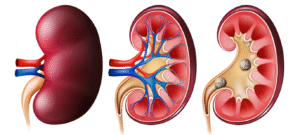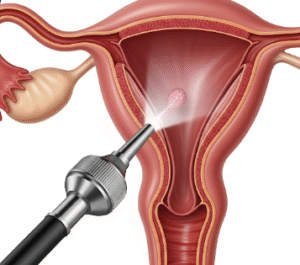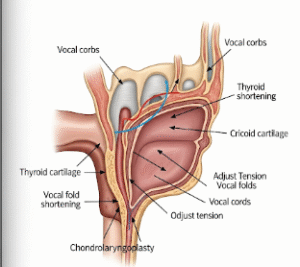Overview
Fetal distress refers to signs that a baby is not well during pregnancy or labor, usually due to insufficient oxygen supply (hypoxia). It is a critical condition requiring immediate medical intervention to prevent complications such as brain injury, organ damage, or stillbirth. In Korea, advanced obstetric care and continuous fetal monitoring systems are widely available, allowing doctors to detect and manage fetal distress effectively. Tertiary hospitals are equipped with neonatal intensive care units (NICUs) and skilled obstetric teams to ensure the best possible outcomes.
What is Fetal Distress?
Fetal distress is a medical condition in which the baby experiences oxygen deprivation before or during delivery. It is often detected through abnormal fetal heart rate patterns, meconium-stained amniotic fluid, or reduced fetal movement. If not treated promptly, it may lead to long-term complications.
Symptoms
- Abnormal fetal heart rate (tachycardia, bradycardia, or irregular rhythm)
- Reduced or absent fetal movement
- Meconium-stained amniotic fluid
- Fetal growth restriction
- Abnormal results on fetal monitoring tests
Causes
- Placental insufficiency (poor blood flow between mother and fetus)
- Umbilical cord compression or prolapse
- Prolonged or obstructed labor
- Maternal medical conditions (e.g., preeclampsia, diabetes, anemia)
- Post-term pregnancy (over 42 weeks)
- Infections affecting the mother or fetus
Risk Factors
- Advanced maternal age
- Multiple pregnancies (twins, triplets)
- Maternal smoking, alcohol, or drug use
- Maternal chronic illnesses (hypertension, heart disease)
- Previous pregnancy complications
- Abnormal placental or umbilical cord structure
Complications
- Birth asphyxia
- Cerebral palsy or brain damage
- Stillbirth
- Low Apgar scores at birth
- Long-term developmental delays
- Neonatal death in severe untreated cases
Prevention
- Regular prenatal checkups
- Ultrasound monitoring of fetal growth and well-being
- Non-stress tests (NST) and biophysical profile (BPP)
- Avoiding smoking, alcohol, and drug use during pregnancy
- Proper management of maternal health conditions
Treatment Options in Korea
Diagnosis
- Cardiotocography (CTG) for fetal heart rate monitoring
- Ultrasound to assess amniotic fluid levels and blood flow
- Doppler studies for umbilical artery function
- Biophysical profile combining ultrasound and fetal monitoring
Medical Treatments
- Maternal oxygen therapy to improve fetal oxygenation
- IV fluids to stabilize maternal circulation
- Medications to manage maternal blood pressure and contractions
- Stopping or adjusting oxytocin (if contractions are too strong)
Surgical & Advanced Interventions
- Emergency Cesarean section (C-section) in severe cases
- Operative vaginal delivery (forceps or vacuum) when needed
- NICU support for newborns affected by oxygen deprivation
Rehabilitation and Support in Korea
- Neonatal intensive care for babies with complications
- Developmental follow-up programs in pediatric hospitals
- Family counseling and parental support













